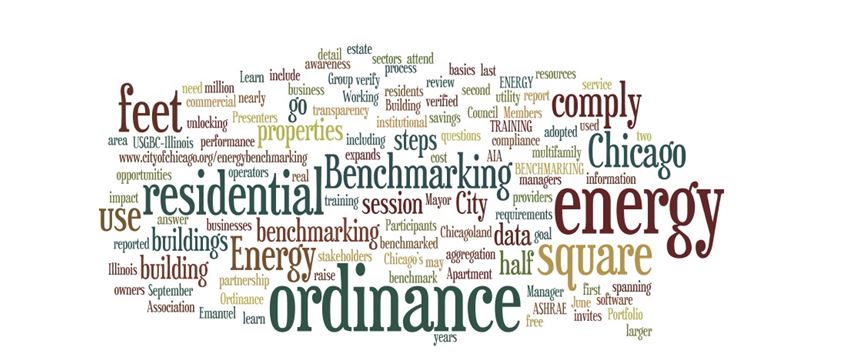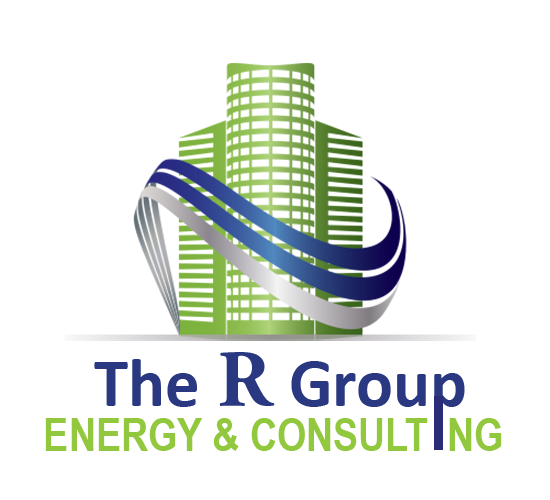ENERGY STAR BENCHMARKING

One way of evaluating one’s building’s energy efficient possibility without a detailed energy examination is by benchmarking your building’s energy consumption against comparable properties. Benchmarking is the method of relating the energy performance of a specific commercial building to an array of energy-performance standards of comparable buildings.
Benchmarking is a modest energy governing method that permits you to account and evaluate energy and water consumption throughout your entire range of buildings. Whether you individually manage, or owner of properties for investment, benchmarking will help you to established investment priorities, classify under-performing buildings, validate efficiency progresses, and receive EPA acknowledgement for larger energy performance.
If you wish to know about how to pile up alongside similar services throughout the nation that is similar in operation to yours.
There’s a key: EPA’s 1 – 100 ENERGY STAR score. It’s obtainable for 21 different kinds of services.
WHY Benchmark Your Building

Benchmarking adds value to your business
Even if your building isn’t qualified for ENERGY STAR certification, benchmarking still adds value. Indeed, buildings that constantly benchmark energy use save an average of 2.4%/ year. These outcomes from EPA’s Data Trends series from more than 100,000 buildings that benchmarked energy use in ENERGY STAR Portfolio Manager.
Their services can be rated on scale of 1 -100 comparative to similar building throughout nation. This is same as the fuel economy measured in a car in terms of miles per gallon (MPG). For an example, is the rating is 60 implies that the building achieves better than 60% of all similar buildings throughout nation. If the rating is 40 it indicates that building performance is better than 40% from all the buildings throughout nation. Contrariwise, if the building consumption is more than 80 – 90% of comparable buildings can be a considerable sign for building enhancements.
One of the frequently used method for benchmarking buildings energy consumption is Energy Star Portfolio. CalARCH and GO Solar California are also tools used for comparing services.
Save Energy
The efficiency of a normal commercial building is 70%, it means 30% of energy is wasted. This indicates that precaution measures haven’t been taken, probability is you will find several option to improve.
The good part is to save energy spending money is not mandatory. This can be initiated with absolutely no or low-cost developments, and the savings thus obtained can be utilized for additional broad upgrades.
Low- and no-cost energy-efficiency measures
Some of the practices has been roves to be the best over time. And the concepts mentioned are grounded on best practices from principle ENERGY STAR associates who are expert in minimizing energy loss with lower investment cost. One should remember that the fruits which are hanging lower to ground grows back rapidly. And so to avoid snapback it’s better to track and maintain savings.
Find best practices for:
- Conduct a night time audit to find out what’s on after hours that shouldn’t be.
- Improve operations and maintenance practices by regularly checking and maintaining equipment to ensure its functioning efficiently.
- Optimize start-up time, power-down time, and equipment sequencing.
- Revise janitorial practices to reduce the hours that lights are turned on each day.
- Perform monthly maintenance of heating and cooling equipment to guarantee efficient operation throughout the year.
- Review and emphasize the financial and environmental results of a preventative maintenance program for major systems and components.
- Set goals and a methodology to track and reward improvements.
- Visually inspect insulation on all piping, ducting and equipment for damage (tears, compression, stains, etc.).
- Turn off lights when not in use or when natural daylight is sufficient. This can reduce lighting expenses by 10 to 40 percent.
- Maximize daylighting. After all, sunlight is free! Open or close blinds to make the best use of natural daylight and take advantage of skylights or other natural daylight sources to reduce lighting during daytime hours.
- Use task lighting where feasible.
- Implement a regular lighting maintenance program.
- Remove unnecessary lamps (de-lamp) in over-lit areas. Check your light levels against standards from the Illuminating Engineering Society (IES) to see if you have areas that are over- or under-lit.
- Enable the power management function on office computers, which automatically puts monitors to sleep when not in use.
- Activate sleep settings on all printers, copiers, fax machines, scanners, and multifunction devises so that they automatically enter a low-powered sleep mode when inactive. Use the owner’s manual to make the setting changes yourself, or ask your service vendor to ensure your machines are configured to take full advantage of these features.
- Consolidate stand-alone office equipment to achieve a ratio of one device (typically a networked multifunction device) per 10 or more users. Typical cost savings can reach 30 to 40 percent for electricity, hardware, consumables (paper, ink, and toner), and maintenance.
- Plug electronics into a “smart” power strip that let you designate which electronics should always be on, and which ones do not need power when they’re not in use.
- Set back the thermostat in the evenings and other times when the building isn’t occupied.
- Regularly change or clean HVAC filters every month during peak cooling or heating season. Dirty filters cost more to use, overwork the equipment, and result in lower indoor air quality.
- Adjust thermostats for seasonal changes.
- Use shades and blinds to control direct sun through windows in both summer and winter to prevent or encourage heat gain.
- Control direct sun through windows depending on the season and local climate. During cooling season, block direct heat gain from the sun shining through glass on the east and especially west sides of the facility. Depending on your facility, options such as “solar screens,” “solar films,” awnings, and vegetation can help. Over time, trees can attractively shade the facility, and help clean the air. Interior curtains or drapes can help, but it’s best to prevent the summer heat from getting past the glass and inside. During heating season, with the sun low in the south, unobstructed southern windows can contribute solar heat gain during the day.
- Calibrate thermostats to ensure that their ambient temperature readings are correct.
- Make sure that areas in front of vents are clear of furniture and paper. As much as 25 percent more energy is required to distribute air if your vents are blocked.
- Shorten the preventive maintenance intervals for replacing air handler filters. These keep air clean and prevent equipment from working harder to force air through dirty filters.
- Clean the evaporator and condenser coils on heat pumps, air-conditioners, or chillers. Dirty coils inhibit heat transfer; keeping coils clean saves energy.
- Repair leaks and adjust pressure in compressed air systems.
- Repair steam trap leaks; replace malfunctioning steam traps.
- Repair damaged insulation and replace missing insulation with thicknesses calculated for the operating and ambient conditions of the mechanical system.
- Keep exterior doors closed while running your HVAC. It sounds simple, but it will help avoid wasteful loss of heated or cooled air!
Benchmarking drives action
If you find yourself behind the line and at time if you aren’t aware of it. Luckily, ENERGY STAR has the resources and outfits to get you above the line. Once you standardize your energy performance you will have an improved plan for the next step.
If you come across a low score, energy consumption review can help you track energy loss. This can not only reduce the financial burden on organization but also help reduce greenhouse gas effects.
If you score more than 75%, congrats! you can get an ENERGY STAR certificate which will prove the world that your services are energy efficient. ENERGY STAR certified services still have scope to progress, so keep a track and reviewing your energy efficiency to keep it going in the right direction.
How do I improve my properties with low scores?
Normally the overall commercial building energy efficiency is 70% of the energy it consumes. This points that if no measure has been taken yet, probabilities are you still have several chances to progress. Also its not mandatory to invest in order to save energy. Low and no cost improvements can be an initiative measures and the saving thus obtained an be used for further upgrades.
To improve your properties:
- Use EPA’s Guidelines for Energy Management to determine where to start and how to maximize the return on your upgrade investments.
- Refer to EPA’s Building Upgrade Manual to learn more about specific upgrade strategies and technologies.
- Information on energy management, efficient technologies, and financial evaluation can be found on the Resources & News page.
- Finally, your organization can take full advantage of our resources and
services to optimize the improvements to your building. Star out by
knowing your next steps. Receive our expanded services by obtaining
a Scoping Energy Audit along with your Energy Star Benchmarking.
With the application of new management guidelines and technical advancements, Portfolio Manager can be used for managing objectives and changes in energy consumption of your building’s in order to confirm development.
Normally the average building wastes about 33% of the supplied energy. That’s why a proper energy supervision is good commerce. By keeping a track on these inefficiencies, energy cost can be reduced. Further, by optimizing the energy use will help to reduce greenhouse gases which are produced as a byproduct at the power plants and this results in healthier and cleaner atmosphere.
It’s an economical-verified and planet-accepted strategy for accomplishing the triple bottom line.
Benefits of Being Energy Star Certified
ENERGY STAR certified buildings are more valuable, more competitive and more cost-effective.
Higher Occupancy Trend
It is worth mentioning that variation in occupancy have a significant financial impact for buildings managers and owners.
For instance, if the occupancy rises by 1% in 100,000 SF building renting at $30/sq. foot would cost $0.30/sq. foot or $30,000/year. In order to attain this savings via energy efficiency in a building whose annual energy costs 41.50/SF would demand 20% decrease in energy consumption.
There are numerous factors which hints that ENERGY STAR certified buildings are to be linked with upper level of occupancy. Firstly, these buildings mostly have energy-efficient lighting, ventilation systems and advanced energy management and control systems (EMCS), compared to non-certified buildings.
These technologies had been well proved over time in improving occupant comfort and approach towards occupied space. Improved occupant satisfaction can result in greater occupancy and higher productivity. As depicted in Figure 4, ENERGY STAR certified buildings with upper occupancy tends to have progressive reported use of EMCS.
Benchmarking for Multiple Properties
If you are managing individual building or several properties, energy benchmarking can assist in investment of a particular building(s). we can help create a database which is auto-updated every month which helps in tracking the efficiency of a particular building(s). Here is how it works:

Benchmarking Mandates and Ordinances
Benchmarking Law Compliance
The Benchmarking Law requires the County to make reported benchmarking information readily available to the public.

Los Angeles Energy & Water Ordinance as of January 2017
In Los Angeles it has been made mandatory for the buildings to show annual energy benchmark to fulfil the Existing Buildings Energy & Water Efficiency Ordinance (EBEWE). The final goal of Energy benchmark is to regulate the efficiency of a building which in return will save cost at the expense of energy.
As required by the City of Los Angeles Department of Building and Safety, all buildings that fail to fulfil by July 1, 2017 are issued penalties and public disclosure of non-compliance
It’s easy to become compliant with your city or Counties Ordinance. The R group delivers you with our initial package for your building. Now you can become compliant and plan for the next step.
Your building needs are fulfilled and initiated by our Benchmarking and Scoping Audit package. Without any extra cost both the facilities keep on track.
Make every ideas work! Identify what can be done to keep your building economical in the current market of being green. Along with your valuable energy scoping audit also get your benchmarking compliance in a single step. Avoid the need of EBEWE program being employed in Los Angeles, get the finest of you. Our well experienced project managers can help find solution for your problems and get back you on track.
Call us now, stop wasting energy.
Comply Now with your Benchmarking Compliance Law
Request an Energy Audit Quote for your Cities
energy ordinance requirements
1st Benchmark Due: July 1, 2017
New Extension Due: November 1, 2017
The R Group is standing by to help!


